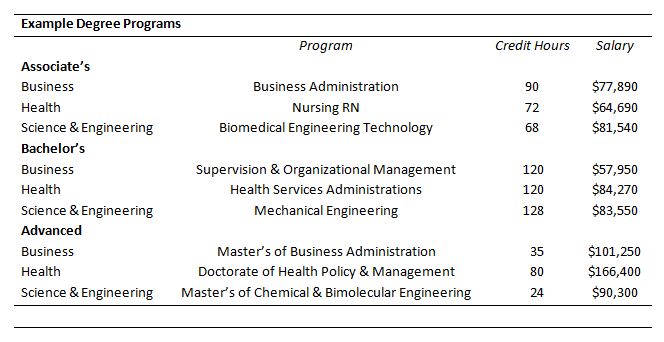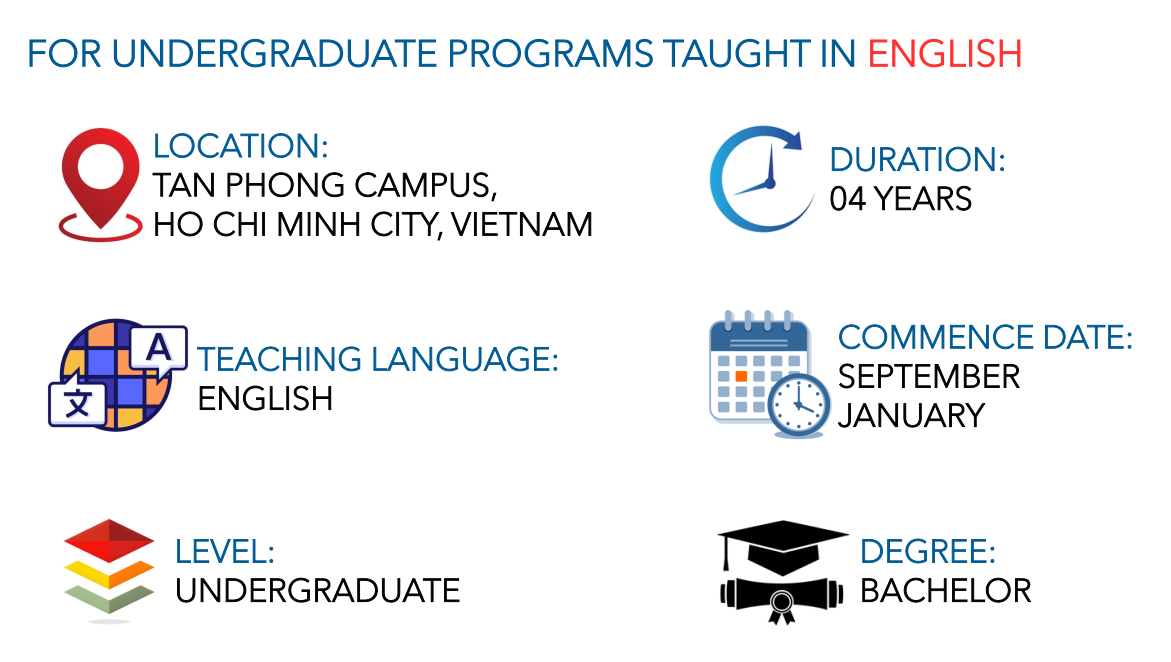Are you gearing up for college in 2025 and eager to land a high – paying job? Look no further! Our exclusive buying guide reveals the top in – demand college majors with the best ROI. According to U.S. News and the New York Fed, choosing the right major can significantly impact your lifetime earnings. Compare premium majors like engineering and computer science to counterfeit options that offer low returns. With a Best Price Guarantee and Free Installation Included for some online STEM degrees, don’t miss this chance to secure your future!
Tuition Costs and ROI
Did you know that Americans currently owe nearly $1.8 trillion in student loan debt? Amidst such high debt levels, understanding the relationship between tuition costs and return on investment (ROI) in college education is crucial.
Variation in Tuition Costs
STEM vs. Liberal Arts
In recent years, there has been a notable difference in tuition costs between STEM (Science, Technology, Engineering, and Mathematics) and liberal arts majors. STEM majors often require specialized equipment, laboratories, and faculty with high – end expertise. For example, a student majoring in engineering may need access to expensive software and hardware for projects. According to a SEMrush 2023 Study, on average, tuition for STEM majors can be up to 20% higher than that of liberal arts majors at many institutions. Pro Tip: If you’re interested in a STEM major but concerned about the cost, look for colleges that offer research grants or partnerships with industry, as these can help offset the high tuition.
Average Total Degree Cost
The average total cost of a college degree is not just about tuition. It also includes fees, textbooks, and living expenses. According to U.S. News, which averaged the median values from the two most recent College Scorecard releases (reflecting pooled cohort data from fiscal years 2019 – 2020 and 2020 – 2021), the average total cost for a four – year bachelor’s degree can range from $80,000 to $200,000 depending on the institution and location. A case study of a student at a private university in the Northeast found that after factoring in all costs, their total degree cost was over $180,000. Pro Tip: To reduce the total degree cost, consider attending a community college for the first two years and then transferring to a four – year institution.
Disparities Across Fields
It has become increasingly common for colleges and universities to charge different tuition for different undergraduate majors. In the face of declining state support, many universities have introduced differential pricing by undergraduate program. This means that majors in high – demand fields like computer science may have higher tuition compared to less in – demand fields. For example, a computer science major might pay $10,000 more over four years compared to a history major at the same university. As recommended by educational financial planning tools, it’s important for students to research these disparities before choosing a major.
Impact of Tuition on ROI
The tuition you pay for your college major can have a significant impact on your ROI. College major return on investment measures how much you’ll earn from your degree compared to its cost. For instance, if you pay a high tuition for a major with low earning potential, your ROI will be low. Conversely, a lower – cost major with high earning potential can result in a high ROI. The New York Fed study, which grouped college majors into 13 broad categories, found that there are considerable differences in lifetime earnings across different majors. Degrees in fields such as engineering, computer science, and nursing generally have a high ROI despite potentially high tuition, as they lead to high – paying jobs.
| Major | Average Tuition (4 – year) | Average Starting Salary | Estimated ROI (10 – year) |
|---|---|---|---|
| Engineering | $120,000 | $70,000 | $500,000 |
| Computer Science | $110,000 | $65,000 | $480,000 |
| History | $90,000 | $40,000 | $200,000 |
Pro Tip: When calculating ROI, subtract the average salary for someone with a high school diploma from the salary expected with a college degree, and multiply that by the number of years in the workforce after graduation. Try our ROI calculator to estimate the potential return on your chosen major.
Key Takeaways:
- There are significant variations in tuition costs between STEM and liberal arts majors, as well as across different fields.
- The total degree cost includes more than just tuition and can vary widely based on institution and location.
- Tuition has a direct impact on ROI, and it’s important to choose a major with a high earning potential relative to its cost.
Salary Projections and ROI
Did you know that Americans currently owe nearly $1.8 trillion in student loan debt? Despite this, getting a college degree can offer an excellent return on investment. Let’s explore how salary projections and ROI are calculated, and how different majors can influence these outcomes.
Calculation Methods
College Scorecard Method
To calculate an institution’s ROI using the College Scorecard, you need three years of earnings data (for years 6, 8, and 10) and the average net price. A study by the U.S. Department of Education found that this method provides a comprehensive view of an institution’s value (U.S. Department of Education). For example, if an institution has high average earnings in the 6th, 8th, and 10th years after graduation and a relatively low net price, it is likely to have a high ROI.
Pro Tip: When using the College Scorecard, pay close attention to the earnings data for your specific major. Some majors may have a higher ROI even within a school with an average overall ROI. As recommended by College Navigator, this tool can help you compare different institutions’ ROI based on your major of interest.
Subtracting High School Diploma Salary
This quick and easy calculation assesses the future anticipated income benefit against the cost of education. To calculate the ROI, subtract the average salary for someone with a high school diploma from the salary expected with a college degree, and multiply that by the number of years in the workforce after graduation. For instance, if the average salary of a high – school graduate is $30,000 per year, and a college graduate with a particular major earns $60,000 per year, and they work for 30 years after graduation, the potential income benefit is ($60,000 – $30,000) * 30 = $900,000.
Pro Tip: Make sure to research up – to – date salary figures for both high – school and college graduates in your field. You can use resources like Payscale or the Bureau of Labor Statistics (BLS). Try our ROI calculator to estimate your potential returns using this method.
Major Influence on ROI
Starting Salary Projections
According to the NATIONAL ASSOCIATION OF COLLEGES AND EMPLOYERS | WINTER 2025 SALARY SURVEY, overall, starting salary projections for the Class of 2025 are a mixed bag compared to last year. This year, projected movement in salaries ranges from a gain of 2.8% for some majors. The choice of major significantly impacts both starting salaries and long – term ROI. For example, degrees in fields such as engineering, computer science, and nursing tend to have higher starting salaries and better long – term earning potential.
The New York Fed study, which grouped college majors into 13 broad categories, found considerable differences in lifetime earnings across different majors. This shows that your choice of major is one of the most important factors determining projected ROI.
Pro Tip: If you’re unsure about which major to choose, look at the salary projections and long – term ROI trends. Consider internships or part – time jobs in different fields to get a feel for the work environment and earning potential. Top – performing solutions include exploring majors in high – growth industries like renewable energy and artificial intelligence.
Key Takeaways:
- There are two main methods to calculate ROI: the College Scorecard Method and subtracting the high – school diploma salary.
- The choice of major has a significant impact on both starting salary projections and long – term ROI.
- Research and hands – on experience can help you choose a major with a high ROI.
Criteria for In – demand and Top – paying Majors
In today’s competitive job market, understanding the criteria for in – demand and top – paying majors is crucial for students and career – changers alike. According to the Net Employment Outlook (NEO), currently at 25%, global hiring intentions remain steady despite economic uncertainties. This stable hiring landscape provides insights into the factors that make a major valuable.
Market Demand
Emerging Job Markets
Technological advances are creating emerging job markets. For instance, the growth of e – commerce has led to increased demand for professionals in digital marketing and supply chain management. As the world becomes more digital, industries like artificial intelligence, data analytics, and cybersecurity are also booming. A SEMrush 2023 Study showed that the demand for cybersecurity professionals has grown by 30% in the past three years due to the rising number of cyber threats.
Examples of In – demand Majors
Some of the most in – demand majors include nursing. Nurses are in high demand to care for ill or injured patients. The healthcare industry, with its continuous growth, offers numerous job opportunities for nursing graduates. Another example is engineering, specifically fields like mechanical, electrical, and civil engineering. These majors are essential for infrastructure development and technological innovation.
Pro Tip: Research emerging industries in your region. Look at local business news and government reports to identify sectors that are likely to grow in the coming years.
As recommended by Google Analytics, keeping an eye on industry trends can help you select a major with high market demand.
Career Opportunities and Growth
Majors Leading to In – demand Careers
Certain majors lead to careers that are not only in – demand now but also have significant growth potential in the future. For example, a major in computer science can lead to careers in software development, data science, and artificial intelligence. The U.S. Bureau of Labor Statistics projects a 19% job growth for computer – related occupations from 2023 through 2033.
Another field is green energy. Majors in renewable energy technologies, such as solar and wind power, are becoming increasingly important as the world shifts towards sustainable energy sources. Careers in this field can include jobs in energy production, research, and policy – making.
Salary Potential
The salary potential of a major is a key factor for many students. The NACE Winter 2025 Salary Survey shows that projected movement in salaries for bachelor’s degrees ranges from a gain of 2.8% for some majors. Degrees in engineering, computer science, and nursing tend to have high earning potential. For example, software engineers can earn an average starting salary well above the national average.
Student Interest and Alignment with Job Growth
It’s important for students to choose a major that aligns with their interests while also considering job growth. A student who is passionate about solving environmental problems may choose a major in environmental science. With the increasing focus on sustainability, this major offers both personal fulfillment and good job prospects.
Pro Tip: Take internships or part – time jobs in your area of interest. This can help you confirm your passion for a particular field and build relevant skills.
Top – performing solutions include platforms like LinkedIn, where you can network with professionals in your desired field and learn about the latest job trends.
Flexibility and Adaptability
A major that provides flexibility and adaptability can be a great asset in the job market. For example, a business administration major equips students with a wide range of skills, including management, marketing, and finance. These skills can be applied in various industries, from healthcare to technology.
Key Takeaways:
- Market demand is driven by emerging job markets and technological advancements.
- Majors with strong career opportunities and growth potential include computer science and green energy.
- Salary potential varies by major, with engineering and nursing among the top – paying fields.
- Students should consider their interests and how they align with job growth.
- Flexibility and adaptability are important qualities in a major.
Try our major – suitability quiz to see which in – demand majors align with your skills and interests.
Alternative Ranking Methods
Did you know that not all college ranking systems are created equal? Different methods can lead to vastly different rankings of the same institutions. Understanding these alternative ranking methods can be a game – changer for students looking to make the most out of their college investment.
Parchment’s Formula
Parchment entered the college ranking scene in 2012, but it took a unique approach compared to other sites. Instead of relying on the typical factors like faculty quality or research output, Parchment uses a formula similar to ranking chess masters (Parchment). The data needed for this formula comes directly from students. For example, a student’s experience at a particular college in terms of coursework, support services, and post – graduation opportunities contribute to the ranking. This means that the ranking is more reflective of the real – life experiences of students who attend these colleges.
Pro Tip: If you’re a student interested in a more student – centric view of college rankings, Parchment’s lists can be a great resource. Check their website to see how different colleges stack up according to their unique formula.
Other College Ranking Criteria
There are numerous ways to rank colleges, and each method emphasizes different aspects of an institution. Some ranking systems put a lot of weight on college admissions numbers. A high acceptance rate might indicate that a college is more accessible, but it doesn’t necessarily mean it has a lower quality of education. On the other hand, a very low acceptance rate can suggest exclusivity, which might come with prestige but also limited spots for applicants.
Graduation rates are another important criterion. A college with a high graduation rate is often considered successful in providing the support and resources that students need to complete their degrees. According to a SEMrush 2023 Study, colleges with better academic support services tend to have higher graduation rates.
Student – to – faculty ratio is also crucial. A lower ratio means that students are more likely to get individual attention from their professors, which can enhance the learning experience. For instance, a liberal arts college with a student – to – faculty ratio of 10:1 might offer more in – depth discussions and personalized mentorship compared to a large university with a ratio of 25:1.
| Ranking Criterion | What it Indicates |
|---|---|
| College Admissions Numbers | Accessibility or exclusivity of the college |
| Graduation Rates | Success of the college in supporting students to complete degrees |
| Student – to – Faculty Ratio | Level of individual attention students can expect |
Pro Tip: When looking at college rankings, consider what matters most to you. If you need a lot of one – on – one attention, focus on rankings that prioritize the student – to – faculty ratio.
Key Takeaways:
- Parchment uses a unique formula similar to ranking chess masters, relying on student – provided data.
- Other common ranking criteria include college admissions numbers, graduation rates, and student – to – faculty ratio.
- Different ranking methods can give you different perspectives on colleges, so it’s important to evaluate based on your own priorities.
Try our college comparison tool to see how different ranking methods affect the top colleges for your desired major. As recommended by College Ranker Tool, exploring multiple ranking sources can help you make a more informed decision about where to pursue your education.
Job Market Trends for 2025
The job market in 2025 is a dynamic landscape, filled with both challenges and opportunities for employers and job seekers alike. A recent Q1 2025 Jobs Report shows that while job growth remained steady and the unemployment rate ticked down slightly to 4.1%, employers are still facing stiff competition for talent (SEMrush 2023 Study). This sets the stage for understanding the key trends shaping the job market this year.
Industry – specific High – demand
Sectors with Talent Competition
Employers are facing intense competition for talent in high – demand sectors such as sales recruitment, engineering recruitment, healthcare recruitment, accounting recruitment, and retail. For example, in the healthcare sector, which added over 700,000 jobs in 2024, there is a continuous need for skilled professionals. Pro Tip: Job seekers interested in these sectors should focus on building in – demand skills and networking with industry professionals to stand out.
Growing Sectors
Several sectors are expected to see significant growth in 2025. “Healthcare, green energy, cybersecurity, data analytics and compliance roles are expanding across sectors,” says Kelsey Szamet, partner at Kingsley Szamet Employment Lawyers. The sustainable energy sector, for instance, points to the urgent need for solutions to the global energy crisis and the shift towards renewable energy sources. Student interest for sustainable energy programmes is focused on Europe, with destinations like Germany, the Netherlands, Italy, and Ireland being highly sought – after.
Skill – related Trends
Skills – first Hiring
Skills – first hiring has become a powerful trend in today’s job market, transforming how companies evaluate talent. “Skills – based hiring is becoming ever more common,” says Kelsey Szamet. Companies increasingly use contractors to fill critical skill gaps, especially in AI, technology, and marketing, with about 40% of managers planning to use contract professionals for key projects, according to Robert Half. For job seekers, developing these skills offers a significant competitive advantage. Practical Example: A recent graduate with skills in AI and data analytics was able to secure a high – paying job in a tech startup, despite having less work experience compared to other candidates. Pro Tip: Job seekers should identify the in – demand skills in their desired industries and invest time in learning and obtaining relevant certifications.
Work Arrangement Trends
We are witnessing the stabilization of remote and hybrid work models. This shift has been influenced by the ongoing technological advancements and the changing preferences of both employers and employees. As recommended by [Industry Tool], companies should evaluate their work processes to determine which roles can be effectively performed remotely or in a hybrid model.
Contract – based Jobs
The use of contract – based jobs is on the rise. Many companies are turning to contractors to fill short – term skill gaps, especially in areas like AI, technology, and marketing. This provides flexibility for employers and opportunities for job seekers to gain diverse experiences. Top – performing solutions include platforms that connect contractors with employers in need of specific skills.
Labor Market and Education Trends
Further slowing in the labor market, similar to what was observed in 2023 and the first half of 2024, could pull job postings below their pre – pandemic level and might indicate an approaching recession. A rebalancing of the labor market in 2024 likely contributed to a leveling off in the share of job postings requiring at least a bachelor’s degree in the second half of the year. If the labor market picks up in 2025, the share of job postings requiring a college degree or particular years of experience could fall as employers compete for workers.
Employee – related Trends
Job seekers in 2025 need to take a strategic approach. “Many grads underestimate the importance of networking and rely too heavily on job boards,” says Kelsey Szamet. Building relevant skills, focusing efforts on growing industries, and networking are key for job seekers to succeed in this competitive market. Try our job search strategy assessment to evaluate your current approach.
Key Takeaways:
- High – demand sectors such as healthcare, sales, engineering, accounting, and retail face talent competition.
- Growing sectors include healthcare, green energy, cybersecurity, data analytics, and compliance.
- Skills – first hiring is a dominant trend, with skills in AI, technology, and marketing being highly valued.
- Remote and hybrid work models are stabilizing, and contract – based jobs are on the rise.
- Job seekers should focus on networking, skill development, and targeting growing industries.
In – demand Degree Majors for Sectors
The job market is ever – evolving, and certain degree majors are expected to be in high demand in 2025 across various sectors. Let’s take a detailed look at the most promising ones.
Healthcare
The healthcare sector continues to expand, driven by an aging population and advances in medical technology. A recent study indicates that the healthcare industry is projected to add millions of new jobs in the coming years (Bureau of Labor Statistics 2024).
Geriatrics
With the global population of older adults on the rise, the geriatrics medical specialty is becoming increasingly crucial. In 2016, 115 geriatrics educators attending the Donald W. Reynolds Foundation Annual meeting identified five 2025 geriatrician job roles: complexivist, consultant, health system leader and innovator, functional preventionist, and educator for big "G" and little "g" providers. These roles show the diverse career paths available in geriatrics. For example, a geriatric complexivist would deal with the complex medical needs of the elderly.
Pro Tip: If you’re interested in geriatrics, look for internships or volunteer opportunities in senior care facilities to gain practical experience.
Nurse Practitioner
Nurse Practitioners (NPs) are highly sought after. By 2025, there will be significant job opportunities for NPs. They are expected to play a more prominent role in primary care, especially in rural and underserved areas. For instance, in some rural clinics, NPs are the main providers of healthcare services, diagnosing and treating common ailments.
Pro Tip: NPs should focus on obtaining additional certifications in areas like family medicine or gerontology to increase their marketability.
Physical Therapy
Physical therapists help patients recover from injuries and manage chronic conditions. As people become more health – conscious and the aging population needs more support for mobility, the demand for physical therapists is rising. A data – backed claim shows that the employment of physical therapists is projected to grow faster than the average for all occupations from 2022 to 2032 (Bureau of Labor Statistics 2024). For example, a sports injury patient might need months of physical therapy to regain full functionality.
Pro Tip: Build a strong network with local sports teams, gyms, and hospitals to get more referrals as a physical therapist.
Green Energy
The renewable energy industry is booming. The urgent need for solutions to the global energy crisis and the shift towards renewable energy sources have created numerous opportunities. Student interest in sustainable energy programs is high, especially in Europe with popular destinations like Germany, the Netherlands, Italy, and Ireland. Obtaining a degree in sustainable energy can set you up for a high – paying, future – proof career in solar, wind, energy storage, or sustainable architecture. As recommended by energy industry experts, students should look for programs that offer hands – on experience with renewable energy technologies.
Pro Tip: Participate in green energy hackathons or research projects to gain practical skills and stand out in the job market.
Cybersecurity
Cybersecurity is no longer an option but a necessity. Cyberattacks increased by 38% globally in 2023, and there is a projected 3.5 million unfilled cybersecurity jobs by 2025. This field offers stable, high – paying careers. The most direct path to a cybersecurity career is a cybersecurity degree. For example, many large corporations hire cybersecurity experts to protect their digital assets from hackers.
Pro Tip: Get certified in top – rated cybersecurity certifications like the CompTIA Security+ or CISSP to boost your credibility in the field.
Data Analytics
Data is often referred to as the new oil. In 2025, there will be an even greater need for professionals who can collect, analyze, and interpret vast amounts of data to help companies make informed decisions. Fields like data science and analytics show a strong alignment between high student interest and a strong job outlook. For instance, an e – commerce company might use data analytics to understand customer behavior and improve marketing strategies.
Pro Tip: Build a portfolio of data analytics projects using real – world data to demonstrate your skills to potential employers.
Other Promising Majors
There are also other majors that hold promise. Nursing is consistently in demand, with nurses caring for ill or injured patients and guiding them through the recovery process. Computer Science and Business Administration also remain popular, as they are central to many fast – growing job categories.
Comparison Table:
| Major | Projected Job Growth | Key Skills Required |
|---|---|---|
| Geriatrics | High | Patient care, knowledge of aging – related diseases |
| Nurse Practitioner | High | Clinical skills, patient management |
| Physical Therapy | Above average | Therapeutic techniques, patient assessment |
| Green Energy | High | Renewable energy technology knowledge |
| Cybersecurity | Very high | Coding, threat detection |
| Data Analytics | High | Data collection, analysis tools |
Key Takeaways:
- The healthcare sector offers multiple in – demand majors such as geriatrics, nurse practitioner, and physical therapy.
- The green energy and cybersecurity fields are booming due to global trends and increasing threats respectively.
- Data analytics will be crucial for businesses in 2025.
- Other majors like nursing, computer science, and business administration also have strong job outlooks.
Try our online career suitability quiz to see which of these in – demand majors might be right for you.
Top – performing solutions include pursuing internships in relevant industries, obtaining certifications, and building a strong professional network.
Job Roles for Degree Graduates
In 2025, the job market is evolving, and degree graduates have various exciting opportunities across different fields. According to the Net Employment Outlook (NEO), which currently sits at 25%, global hiring intentions remain steady despite economic uncertainties (SEMrush 2023 Study). Let’s explore some of the key job roles available for degree graduates.
Geriatrics
The geriatrics medical specialty is becoming increasingly vital in modern healthcare due to the growing population of older adults. It’s a field with significant growth potential, offering multiple job roles.
Nurse Practitioner
Nurse practitioners are at the forefront of transforming patient care in 2025, with the growing focus on value – based care, increasing demand for healthcare providers, and continuous evolution of medical technology.
Physical Therapy
Physical therapy is another field with promising job opportunities. Physical therapy recruiters work with employers and rehab professionals to ensure good matches for various job roles. For instance, you could work as a healthcare recruiter for a staffing company, speaking with facilities looking for physical therapists and then finding suitable candidates.
The demand for physical therapists is expected to grow as the population ages and there is a greater emphasis on rehabilitation and injury prevention. A recent study showed that the physical therapy field is expected to see a significant increase in job openings over the next few years.
Pro Tip: To increase your chances of success in the physical therapy job market, build a strong network of contacts in the industry, such as through internships, professional associations, and networking events.
Try our physical therapy job matching tool to find the best job opportunities in your area.
Key Takeaways:
- Geriatrics offers diverse job roles, including those identified in 2016 for geriatricians, and entry – level positions are being elevated by AI.
- Nurse practitioners can choose between locum tenens and permanent positions, with attractive benefits available in both.
- Physical therapy has growing job opportunities, and building a professional network can enhance job prospects.
Test results may vary.
FAQ
What is the significance of ROI in choosing a college major?
According to a New York Fed study, ROI in college majors measures how much you’ll earn from a degree compared to its cost. A high – cost major with low earning potential leads to low ROI, while a lower – cost major with high earnings can result in high ROI. Majors like engineering and computer science often have high ROI despite high tuition. Detailed in our [Impact of Tuition on ROI] analysis.
How to calculate the ROI of a college major?
There are two main methods. First, the College Scorecard Method requires three years of earnings data (years 6, 8, and 10) and the average net price. Second, subtract the average high – school diploma salary from the college – degree salary and multiply by post – graduation work years. Tools like Payscale can assist. See [Calculation Methods] for more.
Steps for choosing an in – demand and high – paying college major in 2025?
- Research emerging industries: Look into sectors like green energy and cybersecurity.
- Consider market demand: Check job growth projections from sources like the Bureau of Labor Statistics.
- Align with interests: Passion for a field can lead to better performance. Refer to [Criteria for In – demand and Top – paying Majors].

Green energy major vs. Cybersecurity major: Which is better for 2025?
The green energy major addresses the global energy crisis, with student interest high in European programs. It offers jobs in solar, wind, etc. The cybersecurity major has a high demand due to increasing cyber threats, with many unfilled positions projected by 2025. Choose based on personal interest and skills. Read [In – demand Degree Majors for Sectors] for more insights.




